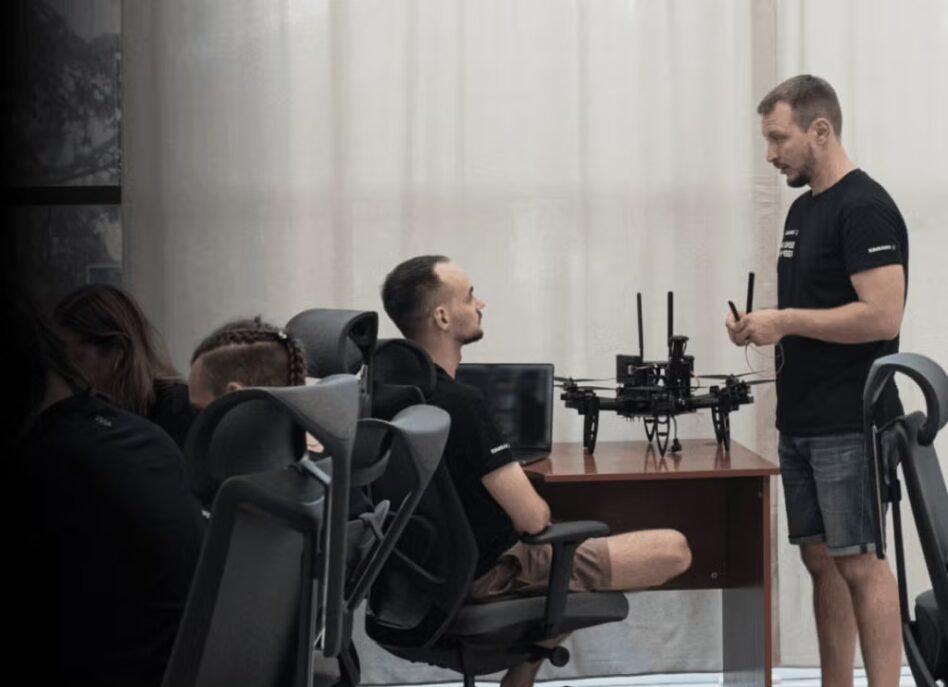We teased yesterday, but it really does seem that the export of Ukrainian defense tech across the NATO alliance is beginning to pick up speed. Yesterday, Ukrainian UAV software company Swarmer announced that it’s closed a $15M Series A led by Florida-based Broadband Capital Investments, with participation from R-G.AI, D3 Ventures, Green Flag Ventures, Radius Capital, and Network VC.
Swarmer CEO Serhii Kupriienko told Tectonic via email that it will use the new injection of cash to “scale operations and deliver advanced swarming capabilities to every unmanned vehicle.” Critically, the money will also help the company export its software out of Ukraine and to NATO allies.
“Ukrainian developers are creating solutions that have no analogues and are transforming the battlefield itself,” Mykhailo Fedorov, First Deputy Prime Minister & Minister of Digital Transformation of Ukraine, said in a statement. “The fact that American investors are investing in our technologies shows that the world not only believes in Ukraine’s potential but is ready to help us bring these battle-proven innovations to the frontline at scale.”
The company says that this is the single largest investment in a Ukrainian defense tech company since the start of the war.
Team up: In case you’re new around here, drones and autonomous systems are all over the battlefield in Ukraine. Swarmer builds software that allows “groups of drones to execute missions autonomously, translating human-defined objectives into coordinated action.”
- Swarmer was founded in 2023 by Kupriienko and Alex Fink in Kyiv, Ukraine.
- The company closed a $2.7M seed round in September 2024, led by R-G.AI, Radius Capital, Green Flag Ventures, D3 Ventures, and others.
The goal of the company’s tech is to let drones carry out missions with little to no human intervention. Essentially, a human sets objectives (including targets, mission area, constraints), then the drones carry out the tasks—they can autonomously coordinate amongst themselves, divvy up tasks, and adapt to changing conditions and adverse circumstances, like if a drone fails.
Swarmer makes a few different products:
- Styx: Swarm management software, which coordinates recon and strike drones, even in areas with limited comms. Styx lets drones coordinate amongst themselves, task, and adapt to changing conditions.
- MINAS: A module for collaborative autonomy, designed especially for denied environments.
- Trident OS: The company’s UAV operating system layer. This helps with secure data storage, streaming, and status updates, which makes the swarms reliable.
All three systems work together to make Swarmer’s vision of autonomous drone swarms a reality. The company says that its software has controlled swarms of up to 25 drones in comms-denied environments.
Plus, Swamer plays nicely with others. Their system is platform-agnostic, meaning it can be used by anyone, in any domain—land, sea, or air. The company says that in the “near future” it will demo its software with “100+ drones of various kinds, working in concert to seamlessly integrate UAS, USV, UGV, and stationary launchers into a single swarm that functions as one unit.” It can also plug into other C2 systems.
In the heat of battle: Like a lot of defense tech developed in Ukraine since the Russian invasion, Swarmer knows its software works because it’s been used on the battlefield. The company says it has carried out over 82,000 combat missions and has access to data from “millions more flown by others.”
The company is betting that this experience can help users beyond the frontline in Ukraine. If you didn’t get the hint with all the US investors, Swarmer says that this $15M will help them “accelerate capability development and broaden operational features” to prep for international expansion. That includes “enhanced allied-grade interoperability, expanded platform certifications, continued robustness testing, and improved user training and field support to meet coalition operational needs,” according to Kupriienko.
Sounds a heck of a lot like Swarmer’s software may soon be coming to an operating theater near you. Look out, world, the Ukrainians are coming.

